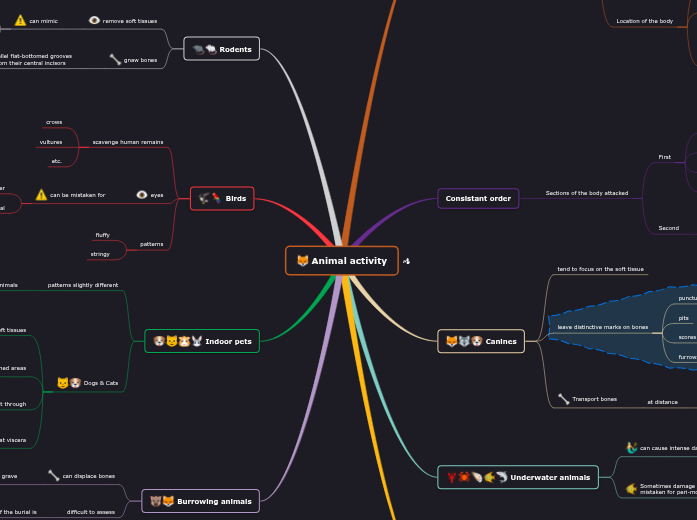arabera Marco Bertolini 5 years ago
358
Forensic Taphonomy - Animal activity

arabera Marco Bertolini 5 years ago
358

ancient
modern
which can mask the cause of death
ribcage
clavicles
head
face
ritual
sadistic murder
defense wounds
entrance wounds
Forensic Entomology
Post Mortem Interval
Dr Agathe Ribereau-Gayon
depending
surrounding environment
size of the animal
disarticulation of limbs
vertebral column
the last part remaining
forelimbs
Throat
Buttocks
Chest
Abdomen
environment
aquatic
urban
rural
outdoor
inside